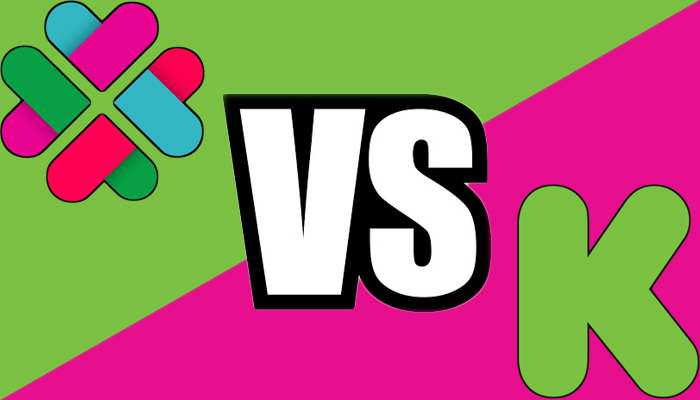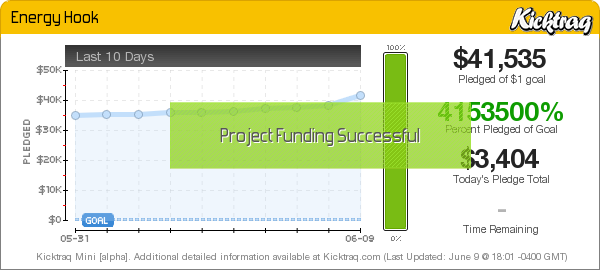
Kickstarter or Indiegogo? If you’ve arrived at this page, it’s likely you have a lot of questions and want some real answers for them. Don’t worry! We’ve got you covered.
On the coming pages we here at ComedyTVisDead will comprehensively lay out all of the benefits and drawbacks of each platform, starting with the basics such as fees and eligibility, and working our way up to more complex issues such as coverage, success rates, analytic trends and post-campaign support.
Whether you’re new to crowd-funding and looking to run your first campaign, or an experienced hand toying with trying a different platform for your latest project, we’ve trawled the web and collated all the most relevant advice, facts and opinions to help you best choose where to host your project. In part 1, we examine the basics…
Before you even begin your crowdfunding adventure, the first thing to do is figure out whether or not you can actually create a project on the platform of your choice. If you live outside of the US or UK, then with Kickstarter you’re in for a headache. Kickstarter’s service is currently only available to those within the US and UK, who are over 18 with an appropriate address, bank account and social security number. Of course, there are legal ways around this, but they are quite involved and can be expensive. You can find two well written guides here and here.
To create a campaign on Indiegogo however, all you need is a valid bank account.
Despite Kickstarter’s tight restrictions on who can create a project, anybody from across the globe can contribute towards one.
First and foremost, there are no upfront costs for setting up a campaign on either site. You will only be charged once your campaign ends and you’ve raised money. Kickstarter provides one funding option – All or Nothing, whereas Indiegogo provides two, All or Nothing, and Flexible Funding. As the name suggests, an All or Nothing campaign means you must reach your target, or else walk away empty handed. Indiegogo’s Flexible Funding on the other hand, allows you to keep any money raised, but at a higher fee.
Currently, Kickstarter apply a 5% fee on funds collected, whereas Indiegogo charge 4% if you reach your goal, or 9% if you do not.
When assessing your project, it’s important to carefully consider whether you’d like to go All or Nothing, or opt for Flexible Funding. On paper, Flexible Funding may sound like it offers the best of both worlds, only charging you the full 9% if you fail to meet your target, but in reality, a properly devised All or Nothing campaign can be just as flexible, with a few added perks to boot.
For well planned projects with a concrete goal in mind, going all or nothing is more often than not your best choice. Doing this provides several benefits for you and your backers – its uncompromising deadline will give your project a stronger sense of urgency, and your backers will be much more willing to donate knowing their money will only be spent if the campaign succeeds. These two points will work in tandem to increase your word of mouth – backers have more incentives to fund and promote you this way.
Where a high stakes all or nothing project gives your backers a clearcut purpose to aim towards and a safety net should they fail, a flexible campaign offers them neither. Allowing you to keep any proceeds regardless of success, flexible funding may sound tempting, but be aware of the wealth of logistical problems that going fleixible creates. Will you be able to fulfill your promises and backer rewards without full funding? What kind of cutbacks will you have to make to do so? Is this what your backers would want or expect of you? How is this going to effect your reputation?
If you have any uncertainty about making your target, but know you can deliver with 80%, 70% or even 60% of that budget, contrary to what you might expect, the best solution ISN’T flexible funding. Your best bet is actually a graduated all or nothing campaign designed around low targets and incremental goals.
The real “best of both worlds” solution, a graduated campaign is simply an all or nothing project, broken down into its base parts, and then re-assembled by your fans. Confused? Don’t be! If you’ve seen or backed a project with stretch goals, then you already know how it works.
To put together a campaign like this for yourself, first you must assess your project. Strip back EVERYTHING that you can and figure out what the bare minimum is that you can deliver without compromising quality. Whatever you’re left with should be the aim of your campaign – in the case of a web series, this might be one episode instead of a full season of 12.
With your new aim now firmly in mind, you can begin to build your project back up, piece by piece until you have a solid grasp of where every single penny you were initially asking for was going to be spent – using this information, you can easily lay out an expansive plan for the future of your campaign and put a price on it through stretch goals.
This structure emulates the “walk away with everything” ethos of a flexible campaign with none of the drawbacks, and full transparency to boot. Backers know exactly where their money is going, and they can work together to democratically decide exactly how much of your project they want to fund. Working towards stretch goals gives your backer base a fun and rewarding target to strive for, a continuous stream of updates and news brings them back to your project time and time again, and each new update provides additional reasons to share, promote and discuss your campaign. This continued buzz brings new viewers, increases your chances of being promoted by Indiegogo or Kickstarter themselves, and gives returning backers ample opportunity to increase their pledges.
Joanna Gaskell, creator of the web-series Standard Action had incredible success with this strategy in April, asking for $12,000 for a 2 episode conclusion to her show’s second series. Using stretch goals, Gaskell was able to raise $36,000 in funding which will be used to create a six episode run instead.
In another unbelievable story of success, game developer Jamie Fristrom, the lead designer of Spider-Man 2 pushed this idea to its absolute limit by asking for only $1 to finish his futuristic grapple-and-swing sports game Energy Hook. Explaining the low goal, Fristom says “In short, as I’ve been working on this game I’ve fallen in love with it, and I’m going to finish it, no matter what, even if I don’t raise a dime”
With zero risk of failure, he was able to set the lowest goal possible, and walk away with any and all proceeds. Thanks to stretch goals, he raised $41,000 – 4.15m times his asking price.
Of course, not all projects are suited to a graduated structure, but most are. If you can make it work for you, then it is by far the most rewarding campaign structure available to you.
With the basics now out of the way, in part two we delve into the more specifics merits and differences between Indiegogo and Kickstarter, taking a look at outreach, promotion, varying project guidelines and the elusive “gogofactor”. Click below for our second part.





